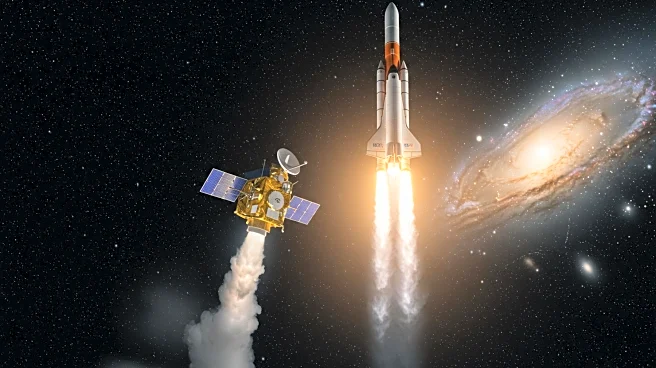What is the story about?
What's Happening?
Europe's Ariane 6 heavy-lift rocket is set to launch for the third time, carrying the Metop-SGA1 weather satellite. The launch is scheduled from Europe's Spaceport in Kourou, French Guiana, at 8:37 p.m. EDT. The Ariane 6, successor to the Ariane 5, debuted with a test flight in July 2024 and successfully completed its first commercial mission in March. The Metop-SGA1 satellite, weighing 8,900 pounds, will be operated by EUMETSAT and deployed into a polar orbit 500 miles above Earth. It will gather weather and climate data using its six onboard instruments, with an operational life expected to last 7.5 years. This launch marks the 355th for Arianespace and the 15th spacecraft launched for EUMETSAT.
Why It's Important?
The launch of the Metop-SGA1 satellite is significant for advancing weather and climate monitoring capabilities. The satellite's high-resolution observations will enhance understanding of global weather patterns, aiding in climate research and forecasting. The Ariane 6 rocket's successful deployment of the satellite underscores Europe's commitment to space exploration and technological innovation. This mission contributes to international efforts in meteorological data collection, benefiting scientific research and public policy. The collaboration between Arianespace and EUMETSAT highlights the importance of partnerships in achieving space exploration goals and improving global climate monitoring.
What's Next?
Following the successful launch, the Metop-SGA1 satellite will undergo a checkout period before commencing data collection. The satellite's observations will support climate research and weather forecasting, potentially influencing public policy and environmental strategies. Arianespace is expected to continue its launch schedule, with future missions planned to expand the Metop Second Generation constellation. The data collected by Metop-SGA1 may lead to advancements in climate science and contribute to international efforts in environmental conservation. The success of this mission could inspire further collaborations and innovations in satellite technology and space exploration.
AI Generated Content
Do you find this article useful?











